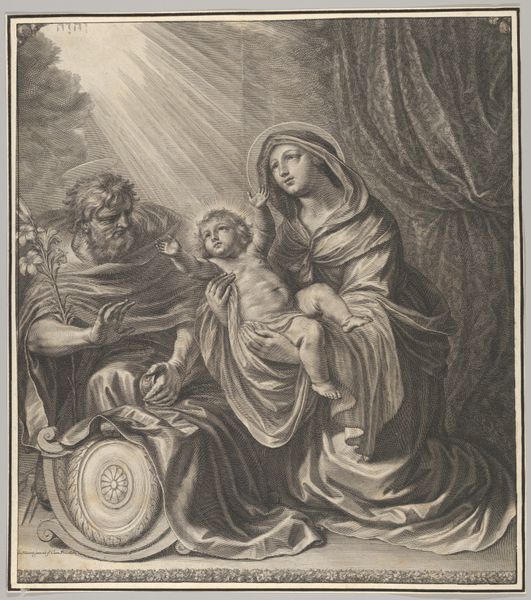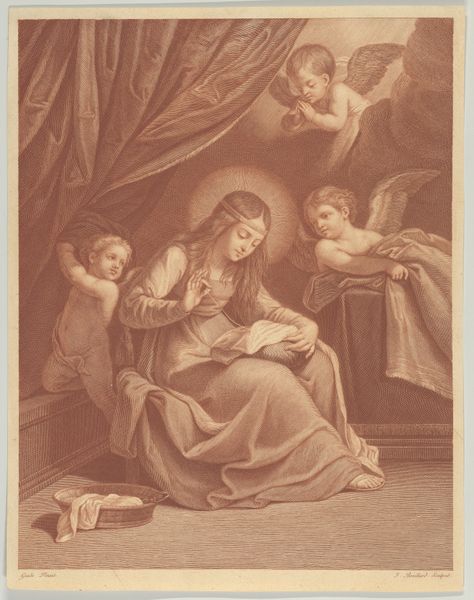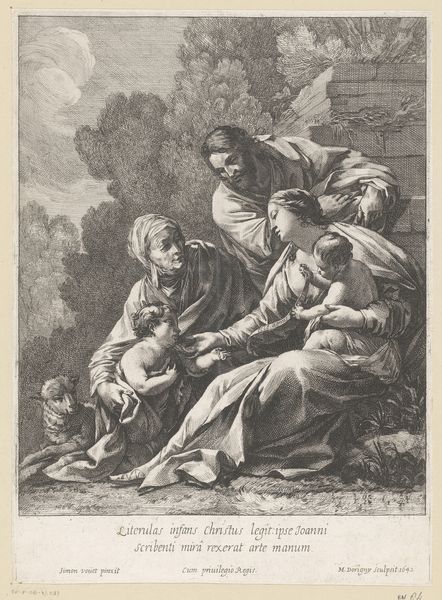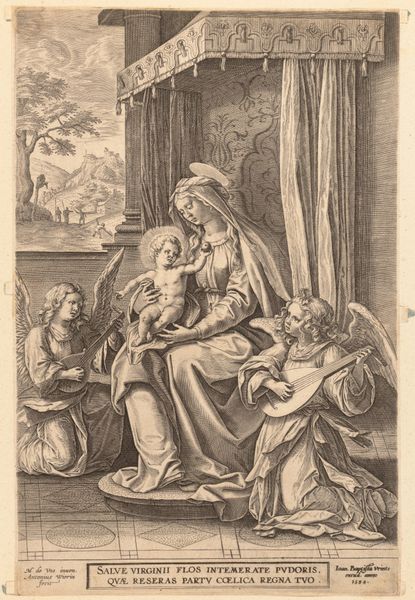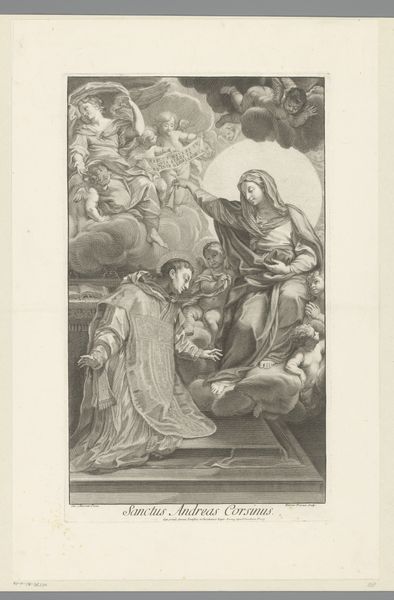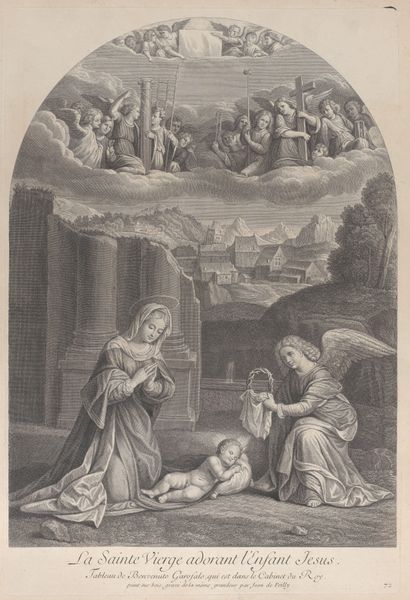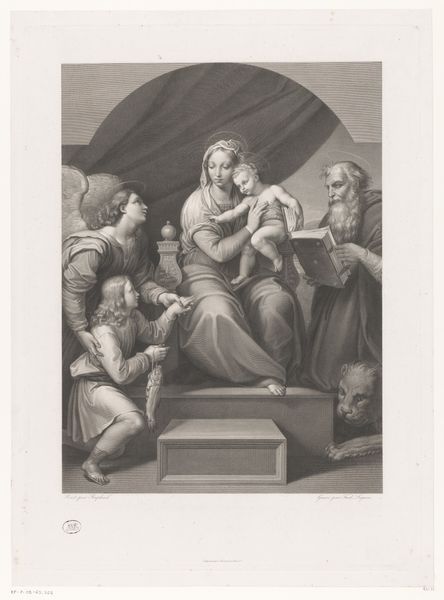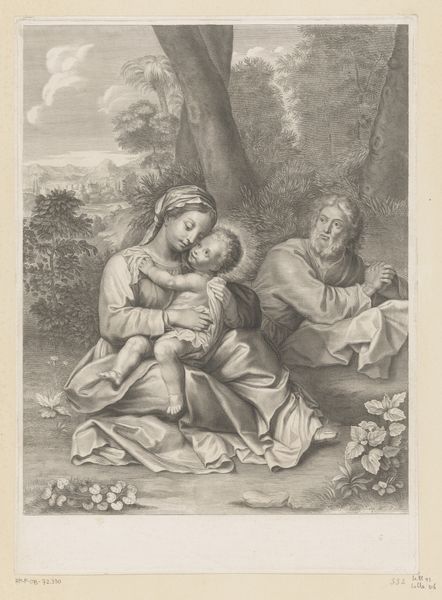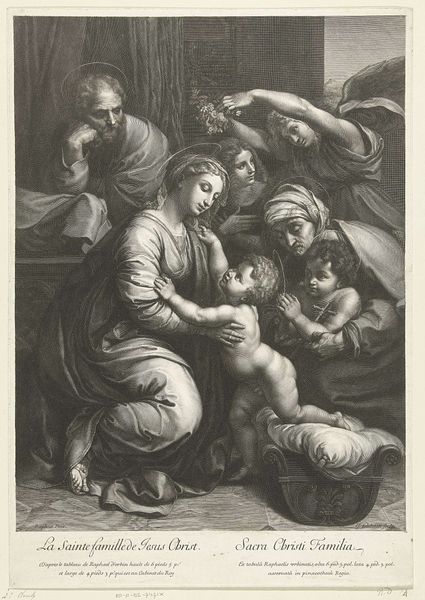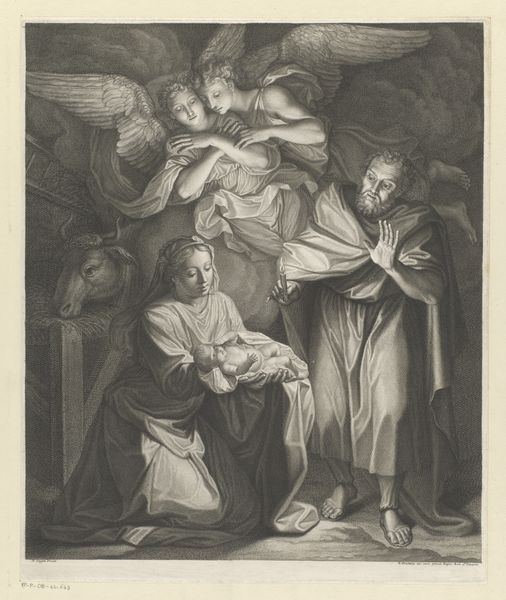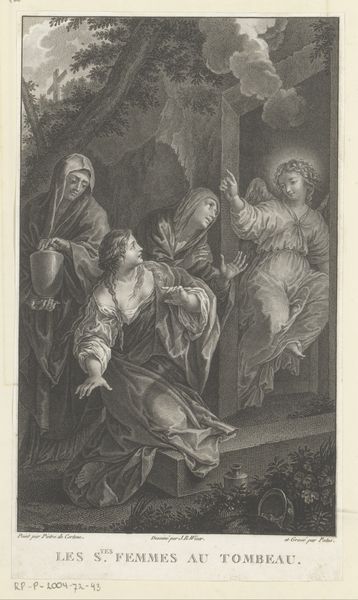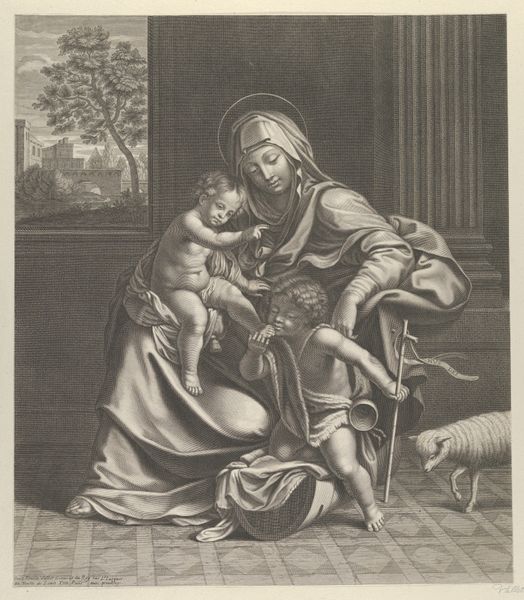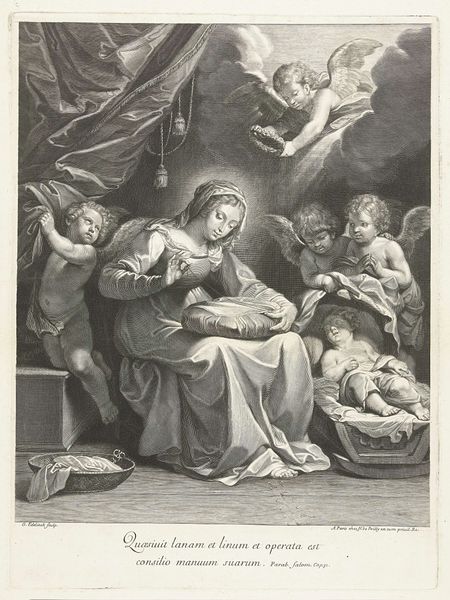
Maria, naaiend of bordurend in de tempel met rond haar drie engelen before 1675
0:00
0:00
engraving
#
portrait
#
baroque
#
old engraving style
#
19th century
#
line
#
history-painting
#
engraving
Dimensions: height 403 mm, width 278 mm
Copyright: Rijks Museum: Open Domain
Curator: Standing before us is a Baroque engraving titled "Maria, naaiend of bordurend in de tempel met rond haar drie engelen," or "Mary Sewing or Embroidering in the Temple Surrounded by Three Angels" created before 1675. Editor: It has an intimate, serene quality. The composition, dominated by soft lines and chiaroscuro effects, lends it a dreamlike air. What strikes me most is how domestic it feels despite the halos and angel wings. Curator: It is interesting that you mention that. The piece itself offers insight into the craft involved: engraving as a mode of production to disseminate religious imagery. Notice the lines, the labor inherent in each stroke to replicate a painted original—that replication shifts its accessibility across class lines. Editor: Precisely. Here we have the Virgin Mary actively engaged in textile production, traditionally seen as "women's work". We're seeing her not as the ethereal queen of heaven but immersed in very practical, tangible skills—sewing or perhaps embroidering. It prompts reflection on the everyday lives of women within religious narratives and power structures. What did those women feel making their own artwork with threads and needles? How has patriarchy informed whose art makes it into a museum? Curator: I would agree. And the engraver’s meticulous effort in translating a painting onto a plate, essentially transforming a brushstroke into an incised line, mirrors Mary’s dedication to her craft. Consider that the reproductive process also served to democratize artwork for audiences—art as devotional object being multiplied and circulated. Editor: That intersection between domesticity and the divine feels significant. Mary is not simply an icon but an active participant in creation itself. It’s a powerful subversion of conventional roles within religious imagery; this artwork serves as a symbol for women to challenge and re-frame patriarchal expectations of domestic roles. Curator: Absolutely. We're compelled to think about artistic skill, labor, and the social context intertwined in this visually compelling historical print. Editor: Yes, seeing art like this encourages one to critically look beyond what's obviously divine and acknowledge those quiet statements of historical intersectionality it offers about its period.
Comments
No comments
Be the first to comment and join the conversation on the ultimate creative platform.
